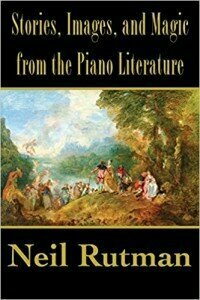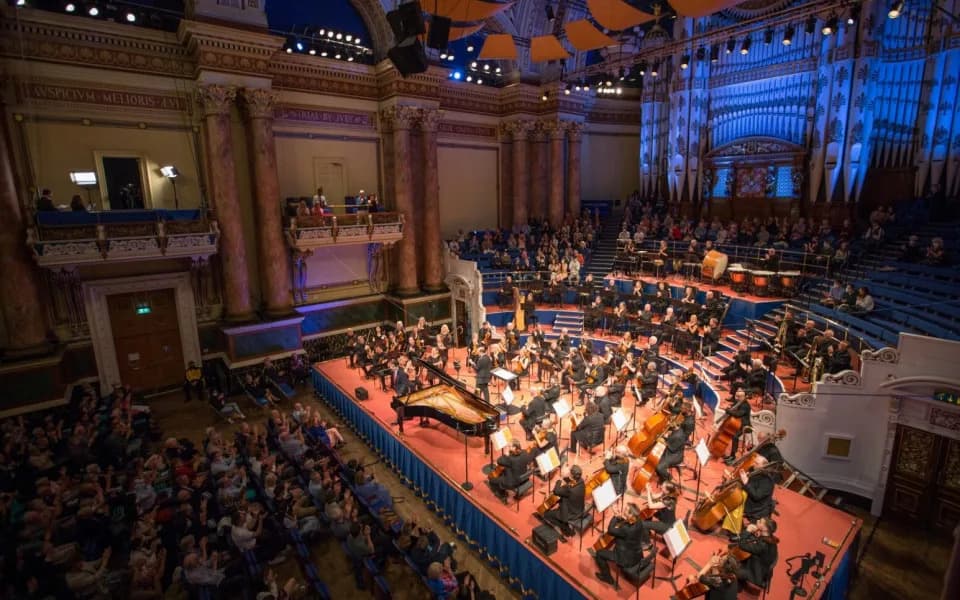 As musicians we can and should call upon our imaginations to enable us to create the myriad sounds we desire from our instrument, and to communicate the story or image of the music to the audience. The first teacher I worked with when I returned to the piano as an adult really encouraged the notion of “hearing the sound” in one’s “mind’s ear” (so to speak) before playing and I have found this technique incredibly helpful in my own playing and my teaching. She also encouraged forming a personal narrative or picture for the music – even if the work has an evocative title such as Chasse-Neige or Jeux d’Eau – to spark one’s musical imagination.
As musicians we can and should call upon our imaginations to enable us to create the myriad sounds we desire from our instrument, and to communicate the story or image of the music to the audience. The first teacher I worked with when I returned to the piano as an adult really encouraged the notion of “hearing the sound” in one’s “mind’s ear” (so to speak) before playing and I have found this technique incredibly helpful in my own playing and my teaching. She also encouraged forming a personal narrative or picture for the music – even if the work has an evocative title such as Chasse-Neige or Jeux d’Eau – to spark one’s musical imagination.
Alongside this, our musical imagination can be piqued and encouraged by other stimuli: listening to works by the same composer, or from the same period, looking at art, reading poetry and literature, watching films, traveling, life in general…… All these things feed into our cultural and creative landscape to nourish and inform our music-making and stimulate our musical imagination.
In addition, an appreciation of the social, historical and cultural context in which the music was written can also help us create a personal, authentic, convincing and vividly three-dimensional portrait of the music when we play it. Stimulating the imagination through extra-musical sources illuminates and enhances the meaning of the music for us as players. Often editions of piano music contain only the briefest contextual notes, the editor preferring to focus on technical issues, while learned volumes on, say, Beethoven’s Piano Sonatas tend towards dense musicological analysis which can seem totally divorced from the expressive and emotional content of the music (which is, after all, what makes music interesting!).
The American pianist and teacher Neil Rutman has compiled a wonderful resource for pianists, teachers and indeed general music lovers in his book Stories, Images, and Magic from the Piano Literature. It’s a rich seam of information drawn from classical literature, poetry (some of which inspired piano pieces), reviews and critical commentaries, anecdotes and personal reminiscences; in addition, highly informative musical, interpretative and technical insights by acclaimed pianists, including Marguerite Long, Sviatoslav Richter, Alfred Brendel and Edwin Fischer. Much of the material originates from the composers themselves, and as such it offers a unique and sometimes very personal way into the music.
For hours I have been playing over and over again a melody from the last movement of my Phantasie…..Are you not the secret tone that runs through the work?
– Robert to Clara Schumann about the last movement of the Fantasy in C, Op 17.
A few highlights which I particularly enjoyed:
Beethoven: Diabelli Variations No. 7
• Czerny’s adjectives to describe the moods found in Beethoven’s piano works – e.g. unruly, determined, capriciously, teasing, bewitching, roaring, dreamy. That these are the result of Czerny’s intimate acquaintance with and appreciation of Beethoven’s own piano playing make them all the more significant.
• Alfred Brendel’s lively satirical titles of each movement of Beethoven Diabelli Variations, e.g. Var 2 – “Snowflake”, Var 7 – “Sniveling and stamping”, Var 15 – “Cheerful Spook”, Var 30 – “Gentle grief”. You may not agree with these titles, but there’s no doubt that they offer a fresh perspective and may make you consider the music in a different way, thus stimulating new ideas about how to approach and play it.
The great technical errors which deface my piano music, to the point of rending it unrecognizable, are: tempo rubato, stinginess in the use of pedal, and too much articulation in certain arpeggiated phrases which should, on the other hand, be rather smooth and blurred.
– Francis Poulenc on playing his own piano music
Poulenc: Novellette in B flat minor
The book also succeeds in taking classical music out of its gilded cage by offering a more down-to-earth and human approach to the piano repertoire and its composers. It is informed and informative, eminently readable and the kind of book one can keep by the piano for reference, or simply dip in and out for pleasure, such is its appeal.
To close, a quote from Ravel about Oiseaux Tristes from Miroirs, a work I am currently learning: “In it I evoke birds lost in the lethargy of a somber forest during the most scorching heat of summertime.”
I can almost feel that intense heat, smell the resinous scent of pine trees…..
Ravel: Oiseaux Tristes
The composers featured in the book are organised alphabetically by chapter, together with a comprehensive bibliography of sources and an index of all works cited.
Further information about Neil Rutman’s book
More Opinion
-
 What Makes a Good Concert? A memorable concert requires four essential elements. Find out here
What Makes a Good Concert? A memorable concert requires four essential elements. Find out here -
 The Musician’s ‘Non-Negotiables’ Want to level up your music practice? Take inspiration from 'The Bear'
The Musician’s ‘Non-Negotiables’ Want to level up your music practice? Take inspiration from 'The Bear' - The 12th Hamamatsu International Piano Competition
Judgement Explore how they're setting new standards in competition judging -
 Has The Leeds Piano Competition Gone Woke? The Leeds Piano Competition's new guidelines spark debate. Share your thoughts!
Has The Leeds Piano Competition Gone Woke? The Leeds Piano Competition's new guidelines spark debate. Share your thoughts!



